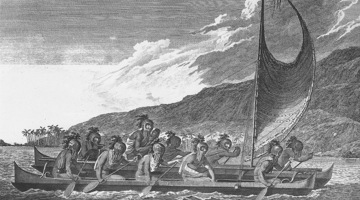Ka kōrerorero kā tamariki me kā kaimahi o Te Kura Kaupapa Māori mō kā whāika o te whakatakaka Ahi Pepe MothNet, mō te te hiraka o kā pepe tuna i kā pūnaha hauropi, ā, mō te take he tauira pai te pepe tuna ki te āta aroturuki i kā panonitaka i te taiao.
English translation
Tamariki and staff of Te Kura Kaupapa Māori o Ōtepoti discuss the goals of the Ahi Pepe MothNet project, the importance of moths in ecosystems and their usefulness in monitoring environmental change.
Tuhinga
TŪMAI
Ko tētahi kaupapa matua o te Ahi Pepe MothNet kia whakamārama atu i ngā tino meka o ngā pepe tuna ki te hāpori.
MAIA
Ko tētahi whāinga o te Ahi Pepe MothNet kia whakawhānui ai i ō mātou nei mātauranga, ā, kia whakawhanake ai, kia whakaako ai hoki ki ngā tāngata huri noa i te motu hei āwhina, hei manaaki i ngā pepe tuna.
GEORGIA
I te tuatahi me āwhina tātou i ngā pepe tuna me tō rātou ao, ā, kia ora pai ai rātou i tō tātou nei taiao.
REO-AAPITI
He kaupapa mahitahi tēnei kaupapa o te Ahi Pepe MothNet, kaipūtaiao mai, pouako mai, iwi mai hoki. Kua whakawhanake te kaupapa nei mai i tētehi kaupapa iti kei raro i te mana o te Kāwanatanga, He Hihiri i te Mahara ki tētahi kaupapa nui ā-motu.
Ko ngā pepe tuna te tatau ki te ao hauropi me te pūtaiao. Ko te rōpū Lepidoptera (ngā pepe tuna me ngā pūrerehua) te rōpū tuatoru nunui o ngā ngāngara i Aotearoa, ā, neke atu i te rua mano ki ēnei momo pepe tuna. E waru tekau mā ono paihēneti ēnei pepe tuna taketake. Kāhore ēnei momo ki tētahi atu wāhi i tēnei ao, ki Aotearoa noa iho.
He tūranga whakahirahira ēnei pepe tuna ki tō tātou nei pūnaha hauropi hei kai mā ngā manu, hei whakaai hoki i ngā tupu. Nā tō rātou ohonga i ngā pō he pīwaiwai ēnei Manu a Rēhua. Heoi, nā tō rātou oranga poto, nā tō rātou tere, nā tō rātou kakama ki te panoni i ngā panonitanga i te taiao hoki he tauira pai te pepe tuna ki te āta aroturuki i te ao pūtaiao.
Te maha hoki o ngā akoranga e hāngai ana ki ngā wāhi nohonga o ngā pepe tuna āwhio haere i te motu nei me te hauropitanga o ngā pepe. Nō ngā tamariki e ako ana i ngā pepe tuna ka kohatia e rātou ngā raraunga hirahira kia anga whakamua, kia whakawhanake hoki i tō tātou nei mātauranga, tō tātou nei mōhiotanga hoki ki ēnei o ngā ngāngara matatini.
Transcript – English translation
TŪMAI
One of the main subjects of Ahi Pepe MothNet project is to help the community understand some of the important facts about moths.
MAIA
One of the goals of Ahi Pepe MothNet is to expand our knowledge so we can help develop and teach others across New Zealand how to help and look after and care for the moths.
GEORGIA
Firstly, we should help the moths and their world so the moths live a good life within our environment.
VOICE OVER
The project Ahi Pepe MothNet is a project of collaboration – scientists, teachers and iwi also. The project has developed from a small project under the government’s He Hihiri i te Mahara to a nationwide project.
The moths are a doorway to ecology and science. The Lepidoptera group (moths and butterflies) are the third-largest group of insects in New Zealand. There are more than 2,000 species – 86% of these are endemic. These species cannot be found anywhere else in the world, only in New Zealand.
These moths hold an important position in our ecological system as food for birds and as pollinators of plants. Because of their nocturnal nature, moths are often overlooked. However, due to their short lifespan, their fast speed and their quick adaptability to changes in the environment, moths are a great subject to carefully monitor our environment.
There is so much to learn about the many places where moths are situated across New Zealand and the ecology of moths. When the children are learning about moths, they are also contributing to the important data furthering and developing our understanding and knowledge about these complex insects.
He mihi ki a koutou:
Dr Barbara Anderson
Dr Robert Hoare
Tiahuia Kawe-Small
The tamariki of Te Kura Kaupapa Māori o Ōtepoti
Manaaki Whenua – Landcare Research
Orokonui Ecosanctuary
Kāi Tahu dialect
The people in this resource use the Kāi Tahu dialect. Te Kura Kaupapa Māori o Ōtepoti is based within the Ngāi Tahu Takiwā.




